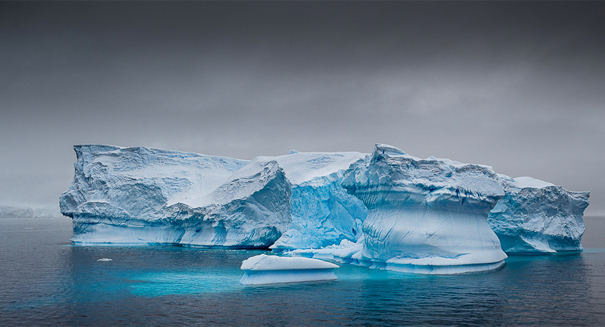
A new study from Bristol University in the UK reveals the alarming rate at which glaciers in Antarctica are currently disappearing into the ocean.
Bad news for the climate came again this week as a group of scientists examined satellite data to show just how quickly the ice cover on the Antarctic continent is melting. According to the BBC, glaciers on the Antarctic Peninsula had been relatively stable up until a critical turning point in 2009.
The study, led by a team of researchers at Bristol University in the United Kingdom, discovered that melting glaciers are dumping up to 56 billion tons of ice into the ocean each year. The scientists attribute the accelerated melting to warm water welling up from below.
Published in Science Magazine, the details of the satellite study include more than 10 years worth of observations of about 750 kilometers of coastline along the southwestern edge of the Antarctic Peninsula. The images show large amounts of glacial ice sliding down mountain faces directly into the Bellingshausen Sea.
According to Bristol University professor Jonathan Bamber, the surface-ice melt really kicked into gear some time between 2009 and 2010. In some areas, the glaciers are being swallowed by the sea at a rate of up to four meters per year. “That’s a pretty big signal,” said Bamber.
The glaciers on the southwester corner of the Antarctic Peninsula are currently dumping about 60 cubic kilometers of ice into the Southern Ocean each year. To put that in perspective, this is about 15 times the amount of fresh water used by the entire United Kingdom each year.
The discovery is troubling for those paying attention to climate change and its associated negative impacts. Sea level rise continues to worry many coastal cities and low-lying countries, and the study has confirmed that these melting glaciers are now the second biggest contributor to increasing sea levels on a global scale.
The researchers were able to figure out how quickly the ice is melting in Antarctica with the help of the European Space Agency’s Cryosat Platform, a satellite orbiting Earth at an altitude of over 700 kilometers. Using a radar altimeter to measure the shape of the ice on the Peninsula, the satellite provides data to scientists on the ground that are able to interpret the changes in ice cover over time.
The team cross-referenced their findings with data collected by United States satellites, and was confident in what their results were trying to say.
They also noticed no marked changes in snowfall or air temperature over the same time period. They reasoned that the main cause of the melting must be coming from below, where the majority of the glaciers rest.
The scientific community is double-checking the Bristol University study’s numbers, but the trend is overwhelmingly clear. As glaciers at the poles of the planet continue to melt, the sea level will begin to rise and threaten coastal cities and communities worldwide.